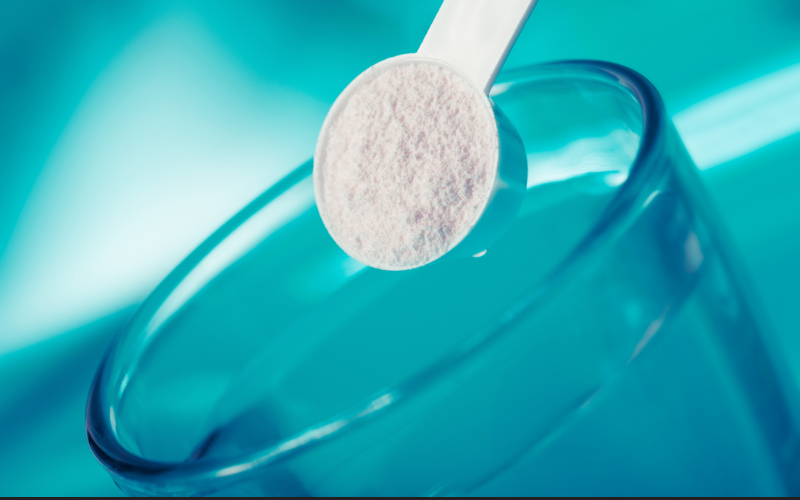As GLP-1 receptor agonists like semaglutide (Ozempic, Wegovy) become more widely used for weight loss and metabolic health, many individuals are discovering a lesser-known side effect: electrolyte imbalance. GLP-1 medications can reduce appetite, slow gastric emptying, and lead to reduced food and fluid intake—making strategic hydration and mineral intake more important than ever.
One often overlooked aspect of staying well-hydrated and supporting muscle, nerve, and metabolic function is salt. But not all salts are created equal—especially when formulating a GLP-1-friendly electrolyte routine. Let’s explore five key options for mindful sodium and potassium replenishment.

1. Potassium Chloride: A Sodium-Free Potassium Source
Potassium chloride is a powerhouse for those looking to maintain healthy potassium levels without increasing sodium intake. Potassium is essential for heart function, muscle contraction, and balancing fluids in the body—especially important for those experiencing reduced food volume on GLP-1 medications.
Because potassium chloride contains zero sodium, it’s ideal for individuals with high blood pressure or those looking to minimize sodium. It’s commonly used as a “salt substitute” in low-sodium diets and can be added to electrolyte powders or capsules to support hydration without contributing to bloating or water retention.
Pro tip: Always consult with a doctor before supplementing with potassium chloride—especially if you have kidney issues or are on blood pressure medication.
2. Potassium Citrate: Alkalizing & Kidney-Friendly
While potassium chloride delivers a strong dose of potassium, potassium citrate offers a gentler, more alkalizing form. It’s often used to prevent kidney stones and balance urinary pH, making it a great option for long-term wellness.
Potassium citrate is particularly helpful for GLP-1 users who may not be eating enough fruits and vegetables, which naturally provide potassium and alkalizing compounds. This salt supports cardiovascular health, cellular hydration, and muscle recovery while also offering metabolic benefits without increasing acidity in the body.
3. Sodium Citrate: A Smarter Sodium Choice
Sodium citrate is a form of sodium bound to citric acid, commonly used in sports drinks and oral rehydration solutions. It’s less harsh on the stomach than table salt and helps buffer lactic acid, making it a favorite among athletes and fitness-focused consumers.
For people on GLP-1 therapies, sodium citrate can be a better tolerated option than traditional table salt—especially for those with sensitivity to sodium bloat. It also helps maintain proper fluid balance and supports the stomach lining, which may be useful when appetite or digestion is altered.
4. Sea Salt: Nature’s Mineral Blend
Sea salt is more than just a culinary staple—it’s a natural source of trace minerals like magnesium, calcium, and potassium. Though it contains sodium, sea salt delivers a broader mineral profile than refined table salt, making it a whole-food-based option for electrolyte replenishment.
When consumed mindfully, sea salt can support electrolyte balance and adrenal function. Use it in cooking or add a pinch to your water with lemon to enhance absorption and encourage hydration.
5. Pink Himalayan Salt: A Mineral-Rich Alternative
Pink Himalayan salt has gained a reputation as the “clean beauty” of the salt world. Mined from ancient sea beds, it boasts a blush hue and over 80 trace minerals. While sodium is still its main component, the additional minerals may provide subtle support for pH balance and nutrient absorption.
In small amounts, pink salt can enhance food flavor, support fluid retention (which can be beneficial for those who experience GLP-1 related dehydration), and contribute to overall mineral intake.
Building a GLP-1-Friendly Electrolyte Routine
If you’re following a GLP-1 protocol, your hydration and mineral needs may shift. Here are a few quick tips:
-
Hydrate with intention: Add a pinch of sea salt or a scoop of a balanced electrolyte blend to your water.
-
Rotate your salts: Use potassium citrate in smoothies, sodium citrate in hydration drinks, and pink salt in meals.
-
Watch for signs of deficiency: Muscle cramps, fatigue, headaches, or dizziness can be signs that your electrolytes are off.
-
Talk to your doctor: Especially before supplementing with potassium or sodium.
By incorporating a range of salts—including potassium chloride, potassium citrate, sodium citrate, sea salt, and pink Himalayan salt—you can better support your hydration, energy, and overall well-being on your GLP-1 journey.
